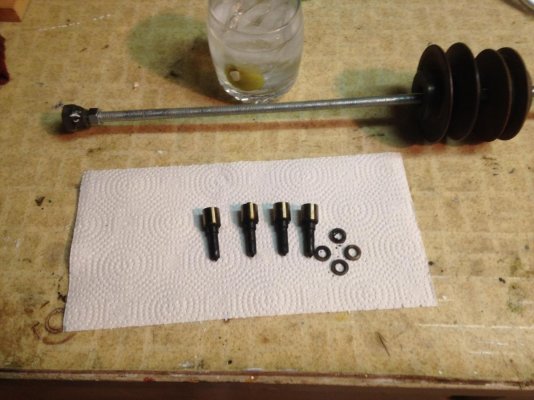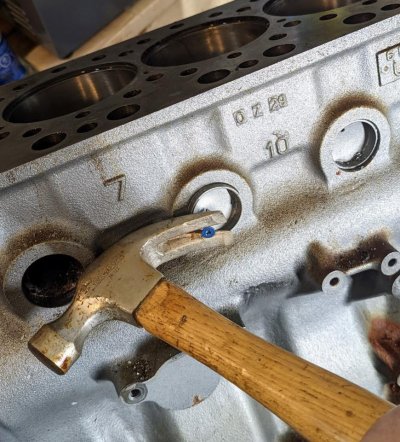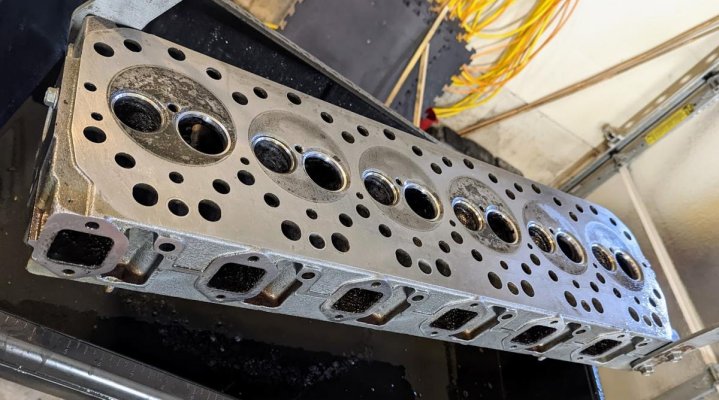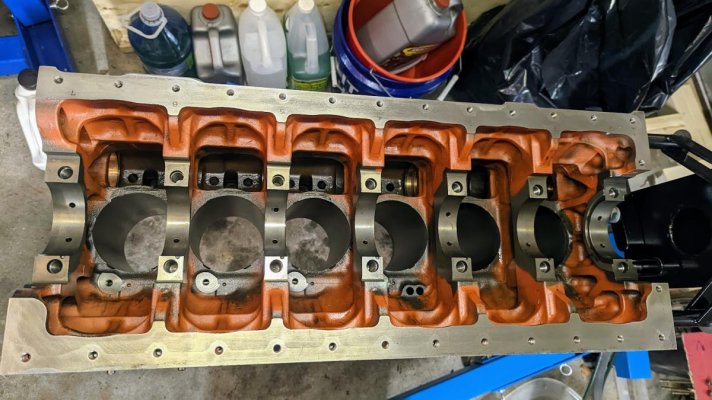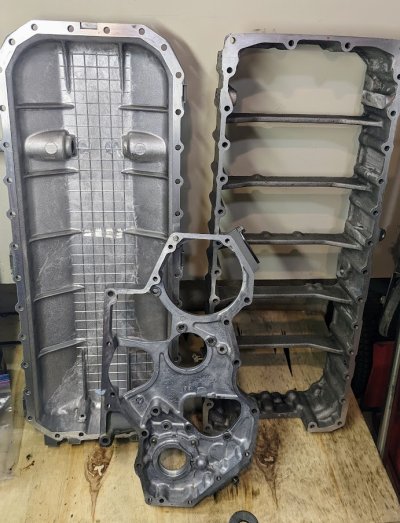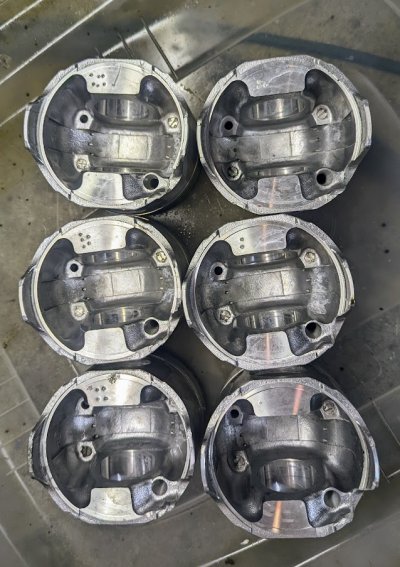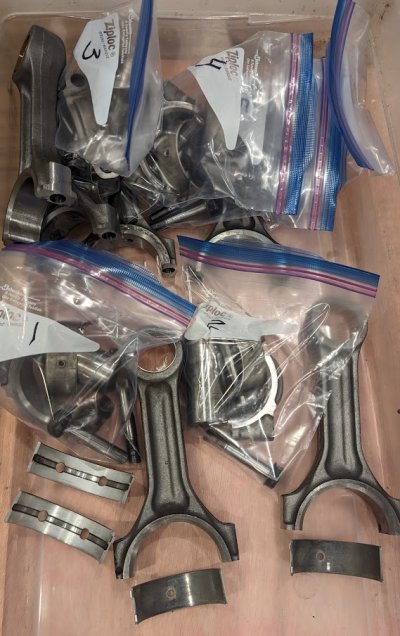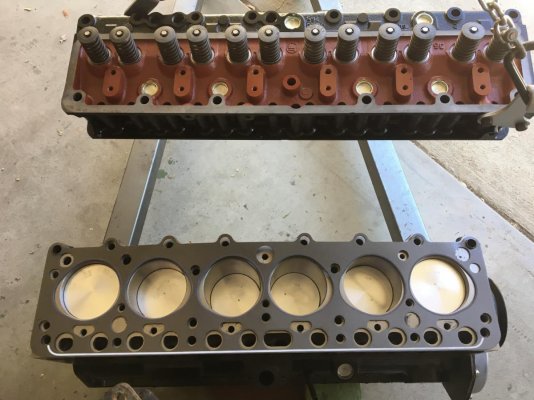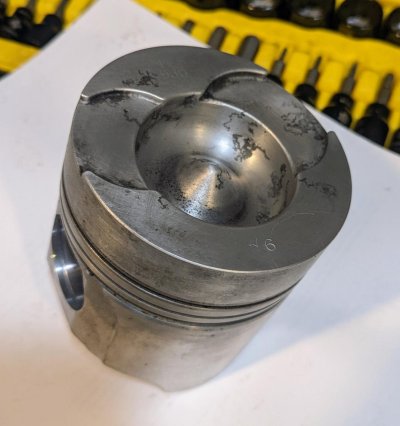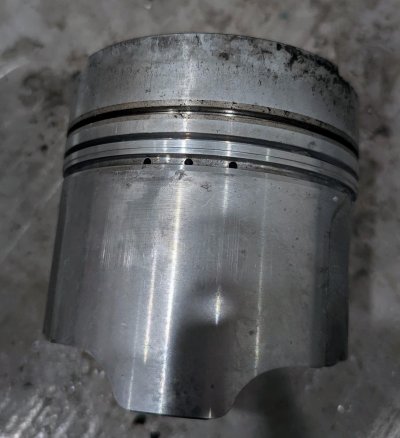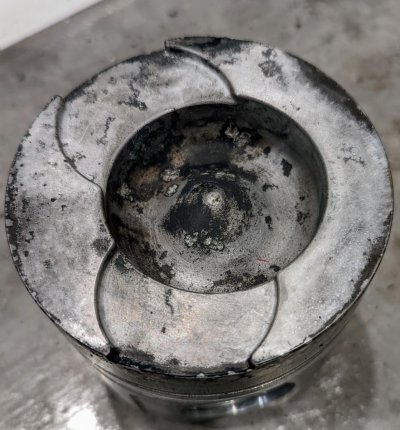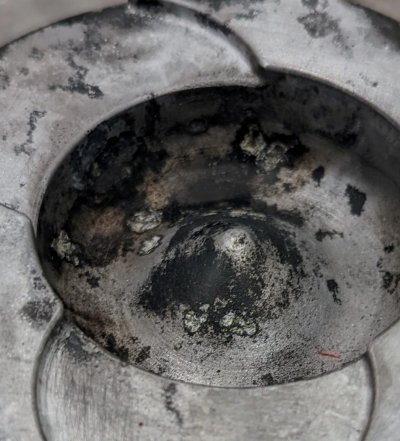Cleaning
Cleaning
I removed freeze or core plugs from the block and the head. The manual says to hit the plug with a screwdriver below the top to tip it over to remove it. That worked for the head plugs but not for the block plugs. Block plugs just got ripped apart without tipping over.
One trick i found is to drill a small hole in the plug between the center and the rim, put a screw in it and use a hummer for leverage to remove it with the plug. Works like a charm.
After removing the plugs, I sprayed oven cleaner for a nice thick coat, waited for 10 minutes, and power-washed with a "gentle" nozzle. I would not use a high-pressure nozzle because I saw one guy pushed out camshaft bearings with it, and I will not be replacing them.
After power washing, i wiped with a rug and used compressed air to air-dry and blow all the holes and cranks.
The last step is to give everything a nice coat of wd40 to prevent the flush rust.
For the gasket surfaces on cast iron parts, i used a metal blade, and on aluminum, i used a plastic blade. Scotch Brite and Vasol (mineral spirit) to super clean everything.
Bronze brushes for cleaning nozzles worked well to get all the sealant out of the bolt holes.
The same procedure is for all large parts: head, block, oil pan, intermediate insert for the oil pan, and gear housing.
I will not be sending the block to a shop to boil it in a hot tank because it will destroy the cam bearings, which are in good condition and I do not plan to replace, and I did not find any rust or other crap inside the engine walls if I look around the core plugs.
If you block in a worse shape and you see the rust and blockage inside the water passages, hot-tanking could be a good option.
Small parts went to the ultrasonic cleaner with distilled water/Simple Green HD 70/30 mixture, and if anything was rusted, i did a cycle in Evaporust.
Check the oil pan...
Cleaning fluids of my choice:
- Oven cleaner (only for a quick spray - it's corrosive)
- Simple Green HD (none-corrosive)
- Evaporust (to clean rusted parts)
- Vasol/Mineral Spirit (the smell is terrible but no risk of corrosion)
- WD40 to coat everything after cleaning
Next... parts inspection, the problems i found so far, and preparing the replacement parts order

